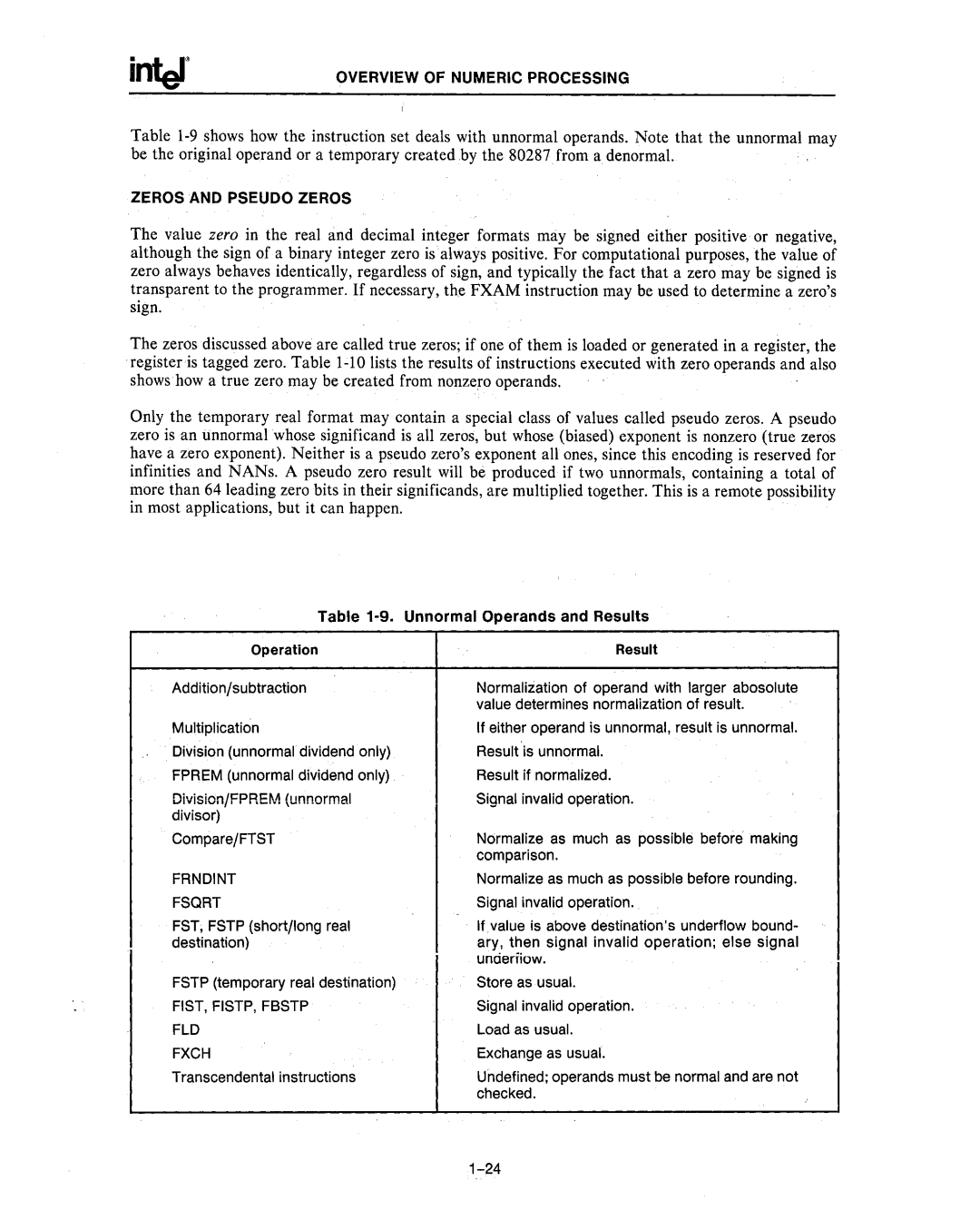
OVERVIEW OF NUMERIC PROCESSING
Table
ZEROS AND PSEUDO ZEROS
The value zero in the real and decimal integer formats may be signed either positive or negative, although the sign of a binary integer zero is always positive. For computational purposes, the value of zero always behaves identically, regardless of sign, and typically the fact that a zero may be signed is transparent to the programmer. If necessary, the FXAM instruction may be used to determine a zero's sign.
The zeros discussed above are called true zeros; if one of them is loaded or generated in a register, the register is tagged zero. Table
Only the temporary real format may contain a special class of values called pseudo zeros. A pseudo zero is an unnormal whose significand is all zeros, but whose (biased) exponent is nonzero (true zeros have a zero exponent). Neither is a pseudo zero's exponent all ones, since this encoding is reserved for infinities and NANs. A pseudo zero result will be produced if two unnormals, containing a total of more than 64 leading zero bits in their significands, are multiplied together. This is a remote possibility in most applications, but it can happen.
Table 1-9. Un normal Operands and Results
Operation | Result |
Addition/subtraction | Normalization of operand with larger abosolute |
| value determines normalization of result. |
Multiplication | If either operand is unnormal, result is unnormal. |
Division (unnormal dividend only) | Result is unnormal. |
FPREM (unnormal dividend only) | Result if normalized. |
Division/FPREM (unnormal | Signal invalid operation. |
divisor) |
|
Compare/FTST | Normalize as much as possible before making |
| comparison. |
FRNDINT | Normalize as much as possible before rounding. |
FSQRT | Signal invalid operation. |
FST, FSTP (short/long real | If value is above destination'sunderflow bound- |
destination) | ary, then signal invalid operation; else signal |
| underiiow. |
FSTP (temporary real destination) | Store as usual. |
FIST, FISTP, FBSTP | Signal invalid operation. |
FLD | Load as usual. |
FXCH | Exchange as usual. |
Transcendental instructions | Undefined; operands must be normal and are not |
| checked. |
